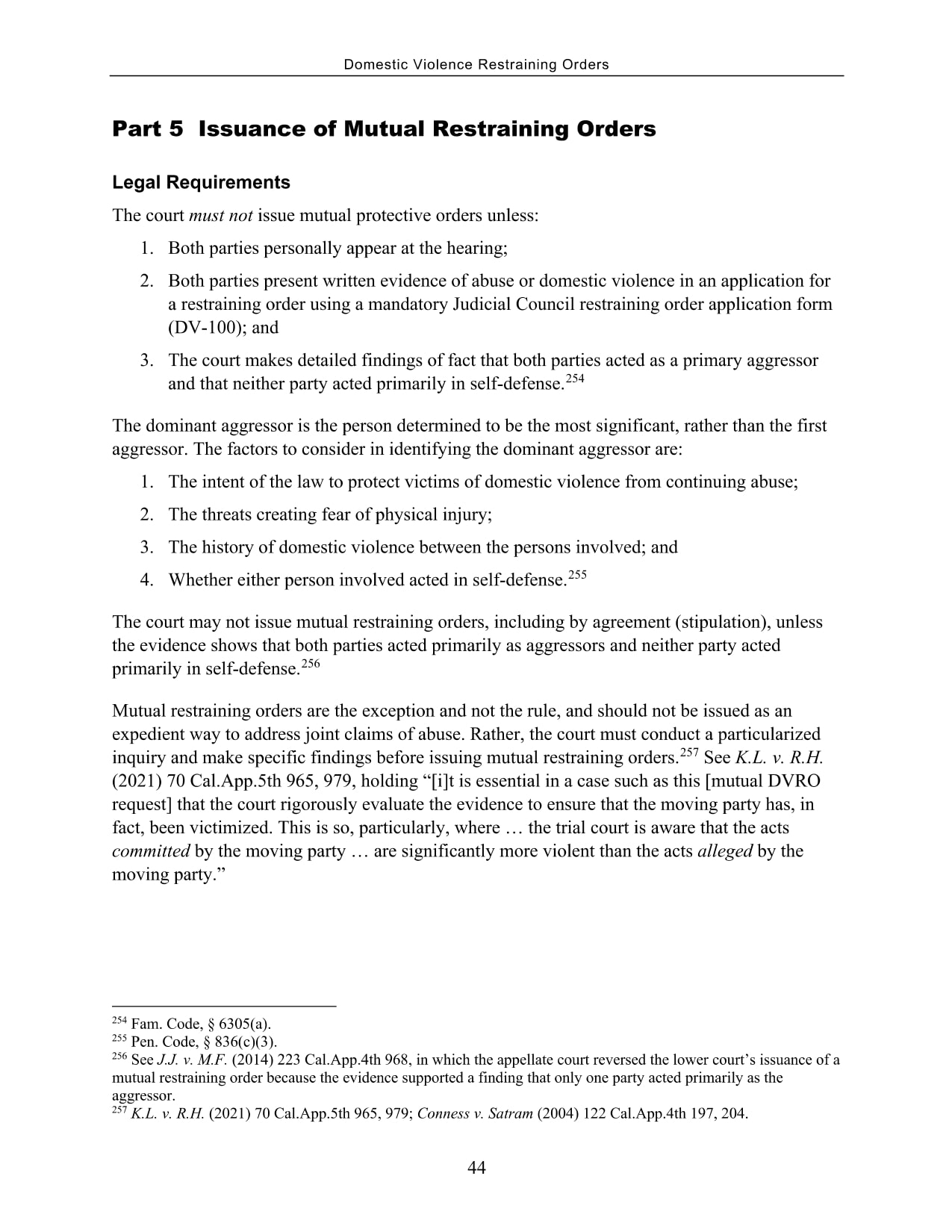Case Background
Jane and John are unmarried partners who were previously in a romantic relationship. Jane was allegedly physically struck, with a closed fist, and threatened with a gun by John. John wielded an unregistered, unlicensed firearm and discharged the gun in the residence, but did not fire it directly at Jane.
Jane filed a police report. When the police went to John’s residence to arrest him, they found multiple unregistered guns, and thus John had multiple criminal gun charges pending, while the DVRO case was before Judge Fong.
Jane filed a request for a Domestic Violence Restraining Order (DVRO), which was adjudicated by the Hon. Keith Fong. It is crucial to highlight that, despite the filing of the complaint and the pending criminal charges, Judge Keith Fong refused to grant Jane a DVRO. Notwithstanding the considerable body of legal precedent that typically necessitates the issuance of a DVRO when a firearm is discharged, Judge Fong claimed that there was “not enough evidence” to grant a restraining order.
Judge Fong attempted to persuade Jane to agree to a mutual Domestic Violence Restraining Order, a mutual Stay Away order, or a Mutual No Contact Order. From her encounters in Judge Fong’s courtroom, Jane witnessed the Judge proposing similar “resolutions” in analogous situations. It’s important to note that, at the time, Judge Fong was a relatively recent addition to the bench and he primarily heard cases involving DVROs.
It is crucial that Judges presiding over Domestic Violence cases, particularly those where clear evidence of violence (such as the discharge of a firearm) is present, be thoroughly versed in the statutes and case laws that govern Domestic Violence.
Most notably, we will direct you to Isidora M. v. Silvino M. (2015) 239 Cal.App.4th 11. The Court of Appeal ruled that trial courts may issue mutual domestic violence restraining orders only if both parties have filed requests for restraining orders. [Isidora M. v. Silvino M. (2015) 239 Cal.App.4th 11]
If we were to interpret section 6305 in the manner proposed by Silvino, so as to permit the trial court to enter a five-year restraining order against Isidora without any notice to her that it was considering doing so, a serious due process question would be raised. “ ‘The essence of procedural due process is notice and an opportunity to respond. [Citation.] “The purpose of notice under the Due Process Clause is to apprise the affected individual of, and permit adequate preparation for, an impending ‘hearing.’ ” ‘ (Gilbert v. City of Sunnyvale (2005) 130 Cal.App.4th 1264, 1279, 31 Cal.Rptr.3d 297.)” (Thornbrough v. Western Placer Unified School District (2013) 223 Cal.App.4th 169, 183–184, 167 Cal.Rptr.3d 24.) Isidora was not given the opportunity to defend against the entry of a restraining order against her because Silvino never requested, and the trial court never advised it was contemplating, such an order. Our determination that the trial court may issue a mutual restraining order under section 6305 only where both parties have filed requests for such relief avoids any concerns with respect to the statute’s constitutionality.
The lack of procedural oversight in Domestic Violence cases and their ensuing rulings within the judicial system signifies a systemic shortcoming, failing to ensure that Judges are effectively protecting litigants from harm. Further, it demonstrates a failing of the Courts when a Judge is permitted to devise their own solutions to scenarios, particularly when they appear unwilling to adhere to the established law and precedent. Lastly, it is a shortcoming of the Courts when our most vulnerable individuals are frequently subjected to further victimization by the judiciary in their pursuit of safety.
At the very least, Judge Fong’s conduct necessitated additional training and supervision. We recommended a comprehensive review of his cases, to verify that victims haven’t been unduly pressured into consenting to mutual restraining orders as a purported “resolution” to a request for a DVRO.
We acknowledge that litigants generally have the option of appeals. However, most survivors of domestic violence appearing in DVRO proceedings represent themselves and typically lack extensive knowledge of legal intricacies. The responsibility squarely rests on the Courts to monitor their own functionaries to ensure that all litigants receive equitable treatment.
Such actions, originating from judges, significantly expose victims to potential danger, rather than offering them protection from violence. Furthermore, it is essential to thoroughly examine Judge Fong’s rulings to ascertain that there isn’t any pattern of discrimination based on race or any other protected class. Belonging to an oppressed group does not preclude one from perpetrating discriminatory actions against others.
Case Resolution
Judge Fong never granted Jane the requested DVRO. John was sentenced by Criminal Court to 1 year in county jail, 54 domestic violence classes, 3 years probation. Jane was granted a 10 year criminal protective order. If John commits any crime (including a violation of the criminal protective order) at all while on probation, he will automatically go to state prison for 4 years. John is also a convicted felon now.


